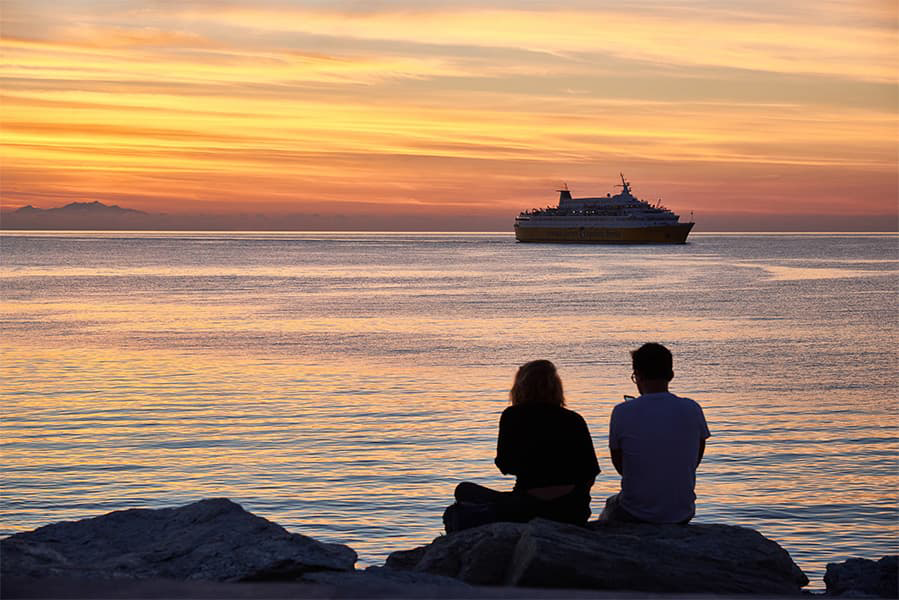Sitia – Athens (Piraeus)
Ferry to Athens
Sitia – Athens (Piraeus)
Ferry to Athens

provides the ferry from Sitia to Athens (Piraeus). Sitia Athens (Piraeus) ferries cost between £80 and £392, depending on ticket details. Prices exclude any service fees. Ferry timetables change seasonally, use our Deal Finder to get live pricing and availability for Sitia Athens (Piraeus) ferries.
The first Sitia Athens (Piraeus) ferry typically departs from Sitia at around 01:15. The last ferry usually departs at 20:30.
The Sitia Athens (Piraeus) ferry trip can take around 12 hours 20 minutes. The fastest sailings are approximately 12 hours 20 minutes with . Sailing times can vary between ferry operators and can be impacted by weather conditions.
There are 2 weekly sailings from Sitia to Athens (Piraeus) provided by . Timetables can change from season to season.
Sitia Athens (Piraeus) ferry prices typically range between £80* and £392*. The average price is typically £156*. The cheapest Sitia Athens (Piraeus) ferry prices start from £80*. The average price for a foot passenger is £156*. The average price for a car is £251*.
Pricing will vary depending on number of passengers, vehicle type, route and sailing times. Pricing is taken from searches over last 30 days and exclusive of service fees, last updated August 25.
The distance between Sitia to Athens (Piraeus) is approximately 241.9 miles (389.3km) or 210 nautical miles.
No, ferry operators currently do not allow cars to travel on sailings between Sitia and Athens (Piraeus).
No, currently ferry operators do not allow foot passengers to sail between Sitia and Athens (Piraeus).
Pets are currently not allowed on board the ferries from Sitia to Athens (Piraeus).
More routes than anyone else.

Compare fares, times & routes in one place.
Change plans easily with flexi tickets.

Book e-tickets & manage trips in-app.
Live ship tracking & real-time updates.

Top-rated customer support when you need it.
"Latvija"
"Kassos to Sitia"
"Piacevole esperienza "
"Easy Work but check your check in "
The port town of Sita is located on the Greek island of Crete which lies in the Aegean Sea. On the island, Sita is to the east of Agios Nikolaos and to the north east of Lerapetra. The town is generally not much visited by tourists and is not particularly well developed and can trace its history back to Minoan times. Excavations have been unearthed in the neighbouring site of Petras which date back to the end of the Neolithic period, 3,000 BC through to the Bronze Age, 3,000 - 1,050 BC. In support of the Petras findings, excavations at other archaeological sites on the island, such as Itanos and Mochlos, have found artefacts from Minoan times. Petras has, over its history, also been under the control of the Venetians who used it as a base for their eastern Mediterranean operations. The site was destroyed by an earthquake in 1508, and again by pirates in 1538 and by the Venetians in 1651.
The port at Sitia connects Sitia and eastern Crete with several other Greek islands as well as with the port of Piraeus on the Greek mainland. The town also has a marina which accommodates smaller fishing boats and yachts.
The Greek city and port of Piraeus is one of the largest ports in the whole of the Mediterranean, and the third largest in the world, and has become a major hub for the ferry network that spans the Aegean Sea. Piraeus is an important city in its own right despite the fact that it is frequently considered to be a suburb of Athens, the Greek capital, which is only a very short distance away. Despite its proximity to Athens, Piraeus' waterfront has its own distinct appearance and visitors will see that the most appealing parts of the city are located around its eastern quarter, alongside both Mikrolimano Harbour and Zea Marina. A popular event in Piraeus is the Ecocinema International Film Festival which is held annually in late February and is where a number of films are screened at the Atticon Cinema and the Cineac Cinema, which are both located in the city's Town Hall Square.
Full of restaurants, bars and nightclubs, the waterfront district was greatly redeveloped in time for the Athens Olympics and as a result a new harbour front promenade was created that is lined with trees and passes the medieval city walls. The walls serve as a reminder and as an insight into the city's rich past.